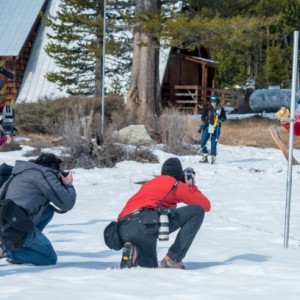The Stream, January 30: Senate Approves Keystone XL, Paving Way for Obama to Make A Long-Awaited Decision
The Global Rundown |
The U.S. Senate has approved Keystone XL, and the time has come for the President of the United States to either sign or veto. The time has also come and gone – again – to launch NASA‘s soil moisture monitoring satellite. A new study says that extreme storms are likely to get larger and less frequent, and another study shows that heat waves in cities around the globe are increasing. California‘s snow pack currently stands at only a quarter of the average.
“This issue is ready for a decision.” — Michael Brune, executive director of the Sierra Club, on President Obama’s upcoming veto or signature of a bill approving the Keystone XL pipeline. (New York Times)
By The Numbers |
62 to 36 – Results of a vote in the Senate yesterday which favored building the controversial Keystone XL pipeline. The measure is expected to reach President Obama’s desk next week, and is expected to be met with a veto. New York Times
25 percent – California’s snow pack this year as compared to average. Scientists performed their yearly measurements in the Sierra Nevada mountains on Thursday. The lack of snow does not bode well for drought-ridden California, as precipitation in rain form is harder to capture and store than slow snow melt. Los Angeles Times
Science, Studies, And Reports |
A study led by Canadian scientists shows that extreme storms, such as the blizzard in New England this week, will likely become larger, but less frequent. The study analyzes the atmosphere as a heat engine – climate change will likely change the way it works. Warmer temperatures will increase the amount of moisture the atmosphere can hold, fueling larger storms with more precipitation, but this will also use up so much energy that wind intensity may decrease, also decreasing storm frequency. Reuters
Heatwaves in over 200 cities around the world are on the upswing, according to a study published in Environmental Research Letters. The study found that hot periods lasting 6 days or more have increased over the past 40 years. In 50 percent of the cities studied, individual hot days have also increased. Reuters
On The Radar |
The launch of NASA’s Soil Moisture Active Passive (SMAP) satellite has been called off for the second time this week in order to repair damaged insulation. It was called off for the first time due to high winds, and the launch has been rescheduled for tomorrow. CBS NEWS
is both a scientist and a journalist, she holds an MS in Environmental Engineering from Michigan Technological University, and she brings proficiency in ESRI’s ArcGIS mapping software.




The Keystone XL is ultimately an environmental – and water – issue.
In January 2015 there were at least 5 pipeline failures or related problems in the U.S.
1) Evangeline Pipeline, near Cameron Parish, Louisiana
2) gas pipeline exploded near the Ross Barnett Reservoir in Brandon, MS
3) Yellowstone River – south of Glendive, Montana – a pipeline breach underneath the Yellowstone River poured out some 50,000 gallons of crude oil
4) a 20 inch ATEX pipeline carrying ethane exploded and burned, in Brooke County, West Virginia.
5) A pipeline leak near Williston, North Dakota, that began January 6 spilled 3 million gallons of brine — a byproduct of hydraulic fracturing. The leak has reached the Missouri River, according to the Associated Press. It’s the largest saltwater spill in the state’s history. Brine is considered toxic; it is saltier than seawater and often contains other fracking fluids and petroleum.
From PBS: The number of spills from North Dakota’s booming oil industry has risen steadily since 2006, the New York Times reported in November. A Times investigation found that 18.4 million gallons of oil and chemical substances have leaked into the North Dakotan air, water and soil between 2006 and October 2014. The Summit Midstream leak follows on the heels of a 50,000 gallon oil spill in the Yellowstone River near Glendive, Montana — the second oil spill in the river in four years.
As the many oil pipelines in our country continue to age, we can only expect more and more spills and the contaminated water that follows.